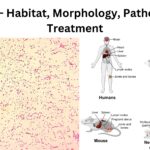What is the process of discovery and development of potential new medicines?
What is the process of discovery and development of potential new medicines?
Please login to submit an answer.
The process of discovering and developing new medicines is complex, lengthy, and involves multiple stages. Typically, it can be divided into four main phases: discovery, preclinical studies, clinical development, and regulatory approval. This entire journey from concept to market can take over a decade, with only a small fraction of initial candidates making it through to approval.
1. Discovery Phase
The discovery phase is the initial step where researchers identify potential new drug candidates. This phase involves several key activities:
- Target Identification: Researchers identify specific molecules (like proteins or genes) involved in disease processes that can be targeted by drugs.
- Compound Screening: Thousands of compounds are tested to evaluate their effectiveness against the identified targets. This includes both novel compounds and existing drugs that may have unanticipated effects on other diseases.
- In Silico Testing: Computational methods are used to predict how different compounds will interact with the target molecules, narrowing down the candidates for further study.
Typically, only about 10-20 out of every 10,000 compounds tested in this phase will progress to the next stage.
2. Preclinical Studies
Once promising candidates are identified, they enter the preclinical phase, which includes:
- In Vitro and In Vivo Testing: Compounds are tested in laboratory settings (in vitro) and in animal models (in vivo) to assess safety and biological activity.
- Safety Assessments: Extensive tests are conducted to ensure that the compounds do not pose significant risks before they are tested in humans. This includes evaluating toxicity and pharmacokinetics (how the body absorbs, distributes, metabolizes, and excretes the drug).
This phase generally takes about 4 to 7 years, depending on the complexity of the drug.
3. Clinical Development
If preclinical studies yield positive results, the drug moves into the clinical development phase, which is divided into three main phases:
- Phase I: Involves a small group (20-100) of healthy volunteers or patients to assess safety, dosage ranges, and side effects.
- Phase II: Involves several hundred patients to evaluate efficacy and further assess safety.
- Phase III: Conducted on a larger scale (300-3,000 participants) to confirm effectiveness, monitor side effects, and compare with commonly used treatments.
Clinical trials can take an additional 6 to 7 years, with each phase requiring regulatory approval before proceeding to the next.
4. Regulatory Approval
Following successful clinical trials, developers submit a New Drug Application (NDA) or a Biologics License Application (BLA) to regulatory authorities like the FDA or EMA. This application includes comprehensive data from all previous phases:
- The review process can take 6 to 10 months, during which regulatory bodies assess all collected data regarding safety and efficacy.
- If approved, the drug can be marketed and sold; however, ongoing monitoring for safety (Phase IV) continues post-marketing
- Share on Facebook
- Share on Twitter
- Share on LinkedIn




